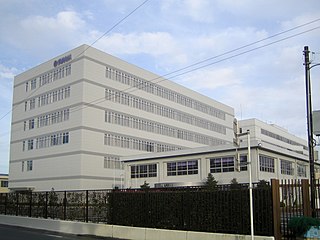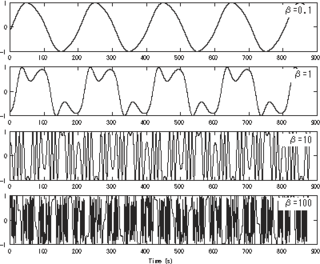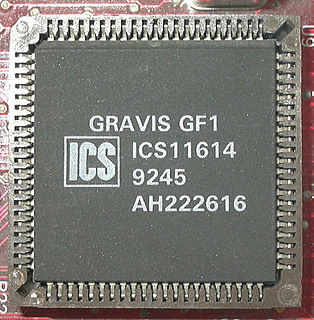
The YMF292, aka SCSP (Saturn Custom Sound Processor) is a multi-function sound chip developed by Yamaha for the Sega Saturn, and was also used in Sega's arcade version of the Saturn, the ST-V, along with the Model 2 and Model 3.
A sound chip is an integrated circuit designed to produce sound. It might do this through digital, analog or mixed-mode electronics. Sound chips normally contain things like oscillators, envelope controllers, samplers, filters and amplifiers. During the late 20th century, sound chips were widely used in arcade game system boards, video game consoles, home computers, and PC sound cards.

Yamaha Corporation is a Japanese multinational corporation and conglomerate with a very wide range of products and services, predominantly musical instruments, electronics and power sports equipment. It is one of the constituents of Nikkei 225 and is the world's largest piano manufacturing company. The former motorcycle division became independent from the main company in 1955, forming Yamaha Motor Co., Ltd, although Yamaha Corporation is still the largest shareholder.

The Sega Saturn is a 32-bit fifth-generation home video game console developed by Sega and released on November 22, 1994 in Japan, May 11, 1995 in North America, and July 8, 1995 in Europe. The successor to the successful Sega Genesis, the Saturn has a dual-CPU architecture and eight processors. Its games are in CD-ROM format, and its game library contains several arcade ports as well as original games.
For sound generation, the SCSP contains 32 sound generators which can function in either FM synthesis or PCM digital audio mode. The sound generation hardware is then fed into the FH-1 128-step sound effects Digital Signal Processor, which includes 16 sound effect presets. Finally each audio channel is mixed together, with fully configurable channel combining for various levels of FM generation complexity. This allowed the channels to modulate each other, in practice four generators were connected at a time but all 32 generators could be combined into one channel if desired. The SCSP also included a 7-level interrupt controller.

Frequency modulation synthesis is a form of sound synthesis where the frequency of a waveform, called the carrier, is changed by modulating its frequency with a modulator. The frequency of an oscillator is altered "in accordance with the amplitude of a modulating signal."
Pulse-code modulation (PCM) is a method used to digitally represent sampled analog signals. It is the standard form of digital audio in computers, compact discs, digital telephony and other digital audio applications. In a PCM stream, the amplitude of the analog signal is sampled regularly at uniform intervals, and each sample is quantized to the nearest value within a range of digital steps.
The SCSP is generally controlled via a dedicated external processor; in the case of Sega hardware, a Motorola 68EC000 is used. Also included alongside is a RAM chip for storing digital audio data and sound programming, and an external DAC chip.

Random-access memory is a form of computer data storage that stores data and machine code currently being used. A random-access memory device allows data items to be read or written in almost the same amount of time irrespective of the physical location of data inside the memory. In contrast, with other direct-access data storage media such as hard disks, CD-RWs, DVD-RWs and the older magnetic tapes and drum memory, the time required to read and write data items varies significantly depending on their physical locations on the recording medium, due to mechanical limitations such as media rotation speeds and arm movement.

In electronics, a digital-to-analog converter is a system that converts a digital signal into an analog signal. An analog-to-digital converter (ADC) performs the reverse function.
In comparison to the sound hardware in other video game systems of the time, the SCSP lacked any sort of hardware audio decompression.













